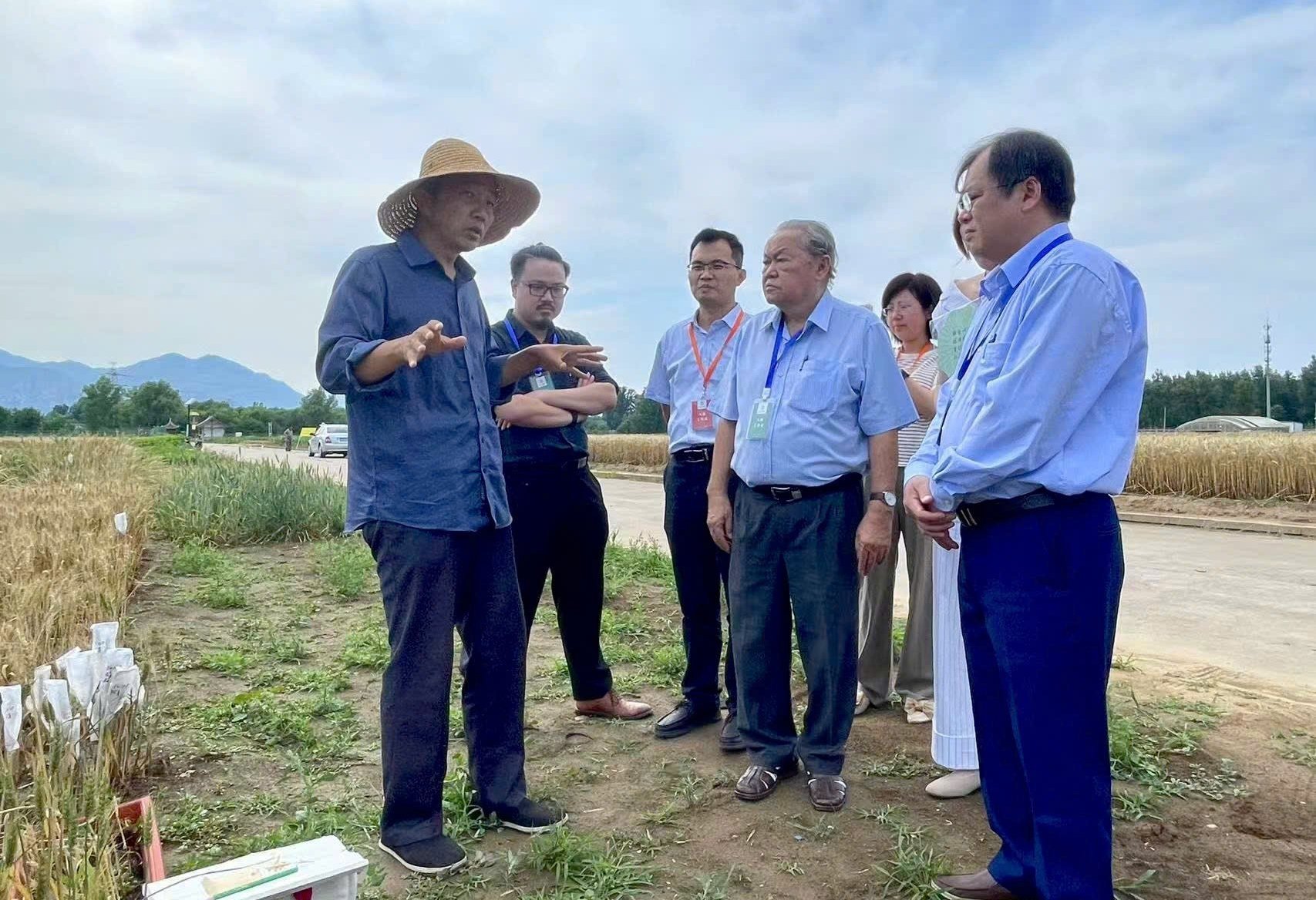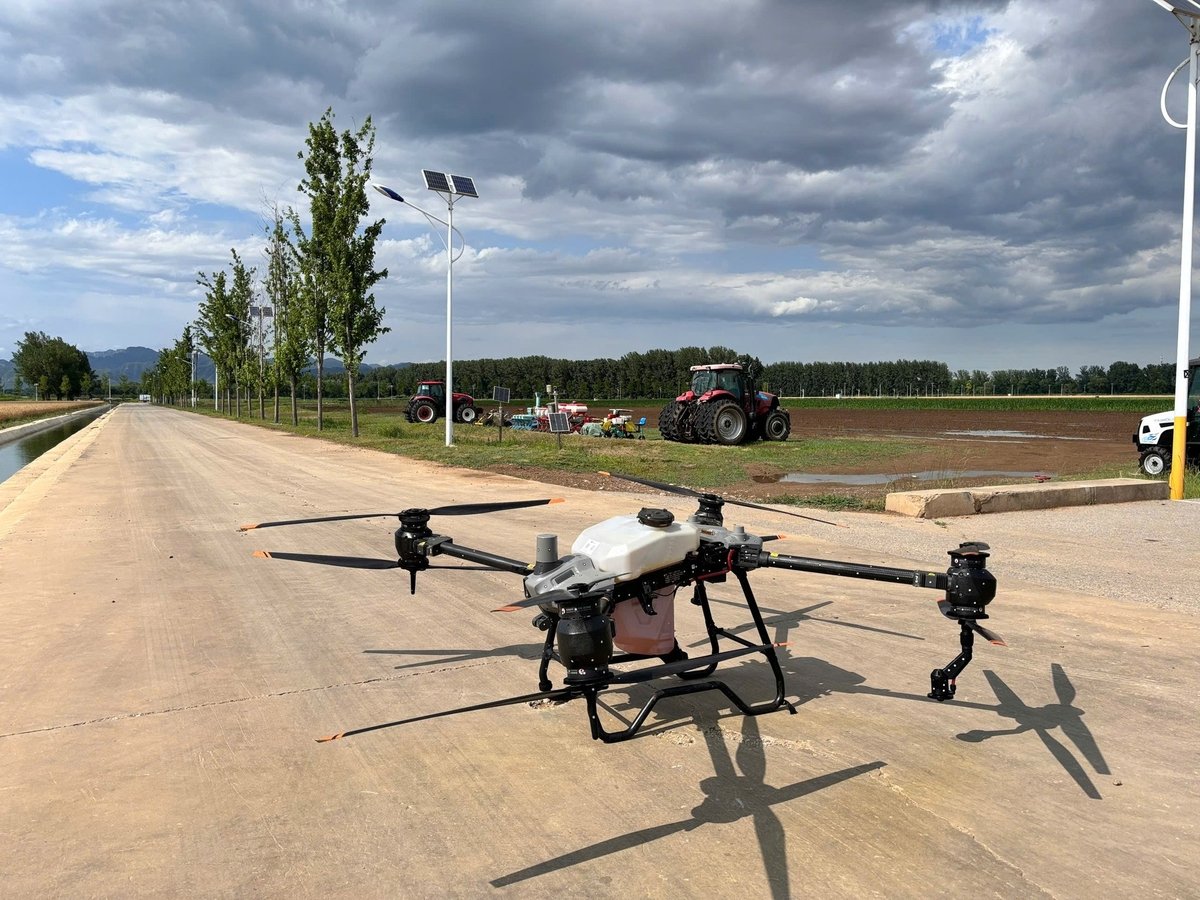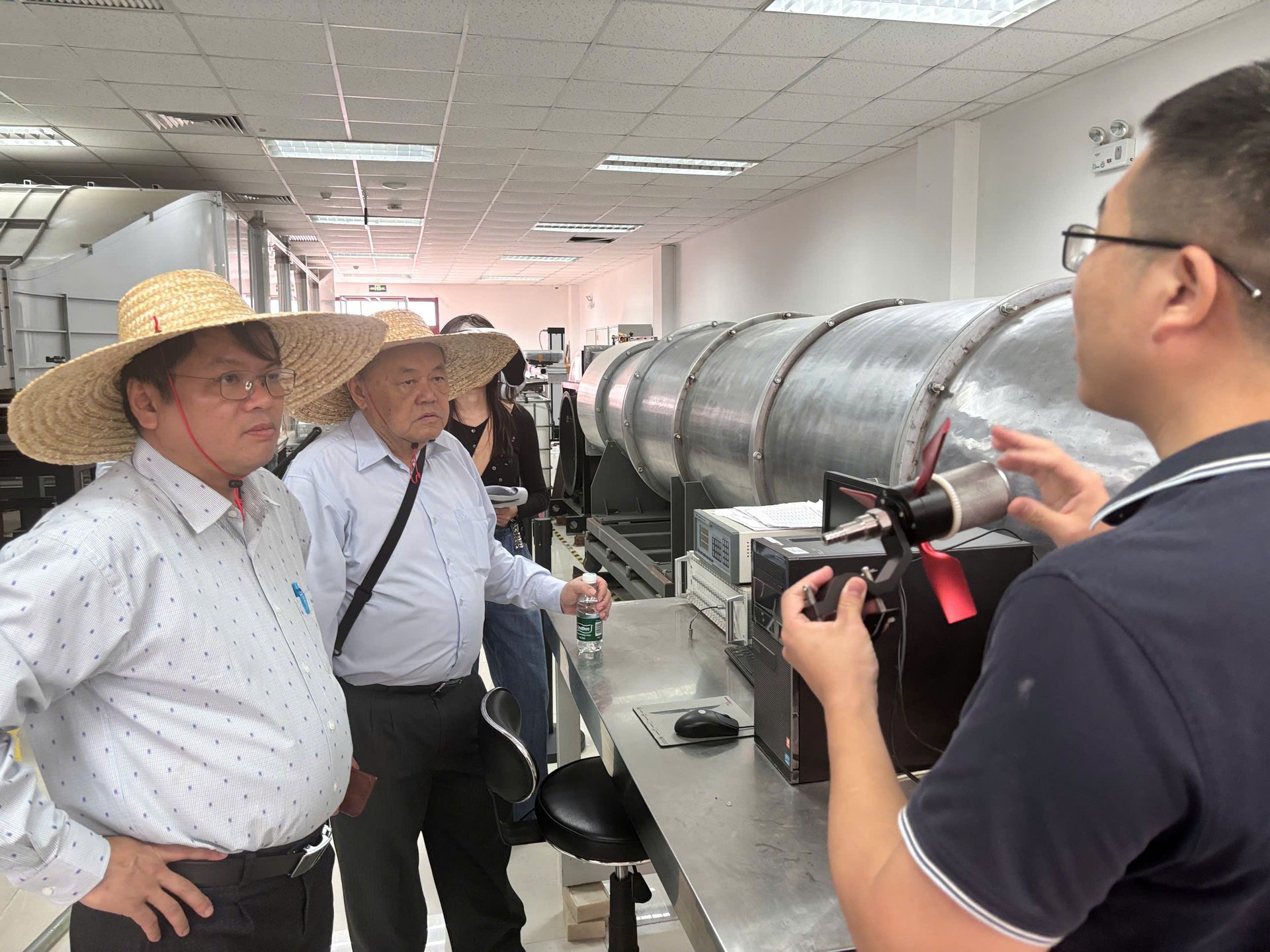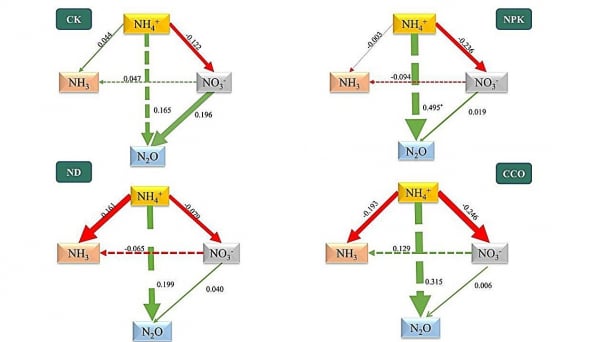June 25, 2025 | 14:37 GMT +7
June 25, 2025 | 14:37 GMT +7
Hotline: 0913.378.918
June 25, 2025 | 14:37 GMT +7
Hotline: 0913.378.918
A 50-minute drive north of central Beijing lies a landscape that appears to be merely traditional wheat fields. Yet hidden behind these familiar crops is a sprawling complex for research, demonstration, and application of precision agriculture. Here, every spray droplet, every variety of food and fruit crop, along with the metal content in the soil is meticulously monitored by high-tech systems. A 20-year technological revolution has completely transformed the agricultural value chain.

The delegation of Vietnamese agricultural scientists discussed with a Chinese professor specializing in wheat varieties. Photo: Kieu Chi.
If the Beijing Academy of Agriculture and Forestry Sciences serves as the origin of national-level research programs, then the National Precision Agriculture Research and Demonstration Base - under the National Engineering Research Center for Information Technology in Agriculture (NERCITA) - is where sciences meet soil.
The center has announced over 1,762 national patents, 3 international PCT patents, and has received 9 national science and technology awards. Its research outcomes have been widely applied across 31 provinces and cities in China, as well as in Vietnam and several other countries.
The delegation of Vietnamese agricultural scientists followed experts and engineers on a tour of the experimental farm, where every square meter is not only a growing area but also a living unit of data. The center is one of the few in the world to successfully develop a UAV system integrated with artificial intelligence to support farming decisions.
“For staple crops - mainly wheat, cassava, and maize used in animal feed, we use UAV to collect real-time data on germination rates and phototropism indices in order to analyze and assess crop health,” explained Dr. Hao Yang, whose team developed the UAV remote sensors.

The National Precision Agriculture Research and Demonstration Base is located in Xiaotangshan and Xingshou towns, Changping District, Beijing. Photo: Kieu Chi.
The research team specializing in the application of aviation in agriculture has made significant progress in addressing technological bottlenecks and meeting the demand for precision aerial pesticide spraying in China. As of the end of 2022, the cumulative area of application had reached 46.8 million hectares, with pesticide use reduced by 20% to 35%.
Experts have developed drift prediction models to predict droplet trajectories and support droplet size selection under various conditions such as wind, flight speed, and altitude. From fixed-wing aircraft and helicopters to multi-rotor UAVs, all platforms have been tested using this precise simulation system, enabling accurate prediction and calibration of aerial spraying performance.
“Drift spray has posed as one of the greatest risks to both the environment and effective use of pesticides. With this model, we can control the droplet path, thereby minimizing waste, preventing pollution, and avoiding soil degradation,” the expert explained while introducing the UAV remote sensors.

With each flight, the drone can carry up to 50 liters of pesticide. Photo: Kieu Chi.
The delegation was introduced to a compact device placed on the ground, which at first glance resembles a 'technical suitcase', with its name Smartsoil. Inside are advanced sensors integrated with AI, most notably an optical detection system that uses high-energy lasers to excite soil into a plasma state, allowing for the measurement of various soil elements in different forms and compositions.
This first-of-its-kind device in the globe can simultaneously analyze nutrients, heavy metals, and trace elements in soil, covering 38 indicators with detection times under 10 minutes, and can be operated directly in the field.
"When soil needs to be measured precisely, we use a sensitive tool to listen," shared an engineer from the center.
But the center's innovations go beyond cultivation. It has also deployed an AI-powered vision system to sort fruits and vegetables after harvest. Using spectral sensor technology, the system can process fruits between 35 - 100 mm in size such as apples, mandarins, oranges, pears, tomatoes, potatoes, onions, and small jujubes in real time, without the need for manual labor. This not only saves on workforce costs but also ensures product consistency and improves quality throughout the supply chain.

The engineer (far right) explains turbulence levels and engine frequency in relation to turbine speed. Photo: Kieu Chi.
A standout feature of the device is its customizable number of channels and classification levels, allowing it to be adapted for a wide range of crop-growing regions across the country.
From automated seeders and growth-monitoring sensors to remote-controlled greenhouse systems and post-harvest quality management tools. All of these technologies and machinery have been developed, tested, and put into practical use at the the National Precision Agriculture Research and Demonstration Base
Experts emphasize that every type of equipment and machinery is subjected to rigorous testing under simulated harsh environmental conditions before it is transferred or commercialized.
Precision agriculture and high-tech farming have long taken root and expanded on the outskirts of Beijing, transforming both the perception and practice of agriculture. Here, farming is no longer simply about cultivation, yet has become a science powered by technology, data, and artificial intelligence. The tools farmers use to do farming have changed: now include UAV, AI systems, machinery, and smart sensors.
The National Precision Agriculture Research and Demonstration Base covers an area of approximately 151 hectares. Each year, it welcomes around 6,000 visitors including tourists, students, and university students, offering opportunities to experience "virtual reality" and try their hand at being high-tech farmers. The initiative aims to infuse curiosity and excitement among future agricultural scientists.
Translated by Kieu Chi

(VAN) Researchers from the Institute of Applied Ecology of the Chinese Academy of Sciences have developed a new environmentally friendly fertilizer additive that significantly enhances crop yields while reducing emissions of harmful gases.

(VAN) Poultry production in Poland, which has only started recovering from devastating bird flu outbreaks earlier this year, has been hit by a series of outbreaks of Newcastle disease, with the veterinary situation deteriorating rapidly.

(VAN) Extensive licensing requirements raise concerns about intellectual property theft.

(VAN) As of Friday, a salmonella outbreak linked to a California egg producer had sickened at least 79 people. Of the infected people, 21 hospitalizations were reported, U.S. health officials said.

(VAN) With the war ongoing, many Ukrainian farmers and rural farming families face limited access to their land due to mines and lack the financial resources to purchase needed agricultural inputs.

(VAN) Vikas Rambal has quietly built a $5 billion business empire in manufacturing, property and solar, and catapulted onto the Rich List.